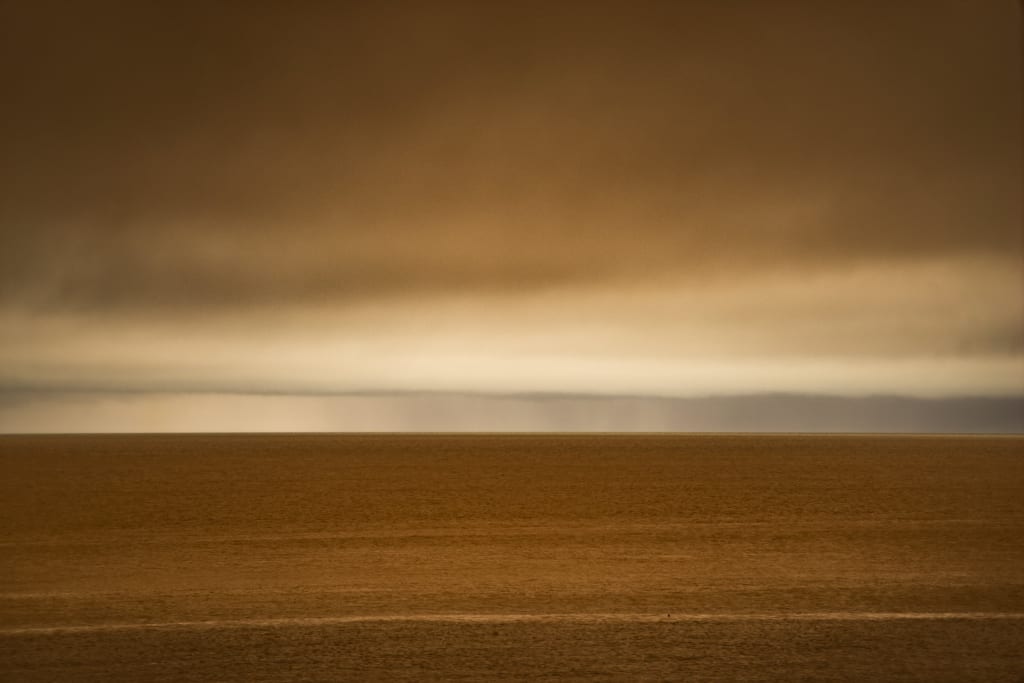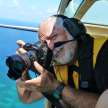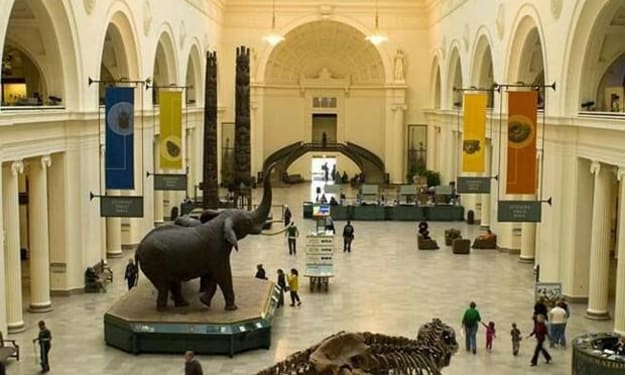Sahara Dust
The morning of the plume’s arrival, low clouds hid the sun and an umber haze rolled in like a slowly breaking wave. The sky and sea turned a light russet shade, and an evening light blanketed Belize for hours.

View print sizes for Sahara Dust by Tony Rath:
Story Behind the Photograph: Sahara Dust
Living on the coast of Belize I am normally surrounded by the most crisp, fresh air you can find anywhere in the tropics. The Northeast Tradewinds, which blow 80% of the year, caress 2000 miles of the Atlantic Ocean before encountering the tiny Caribbean Windward Islands, and then unimpeded, another 2000 miles across the clear, warm Caribbean Sea to Belize. From my front porch the air is often so clear I can discern individual trees on offshore islands 12 miles out to sea.
That is why I took a keen interest in an unusually large dust cloud that left Africa in mid-June of 2020. Dust plumes, known as the Saharan Air Layer, commonly form on the west coast of the African continent every three to five days from late spring through early fall and move into the tropical Atlantic Ocean. Most dissipate with a few weeks, but this one was different. I keenly watched this large plume, easily visible by satellite, as it headed across the Atlantic and entered the Caribbean Sea a week later.
The morning of the plume’s arrival, low clouds hid the sun and an umber haze rolled in like a slowly breaking wave. The sky and sea turned a light russet shade, and an evening light blanketed Belize for hours.
The darkness and gloom belied the significance of the Saharan dust cloud. This mineral laden plume deposits much needed nutrients that foster the health of our rainforests and feed aquatic life over much of the Northern Atlantic Ocean.
The dust cloud also weakens tropical cyclones or tropical disturbances due to its extreme dryness. Since dusty air has about 50% less moisture than the typical moisture laden Tradewinds, it promotes downdrafts around storms that weaken them, potentially suppressing dangerous hurricanes.
I spent the day with my finger on the shutter release, watching and photographing the effects of the dust cloud as a copper light waxed and waned. By the following morning, the Northeast Tradewinds had swept the dust away. I could again see trees on the islands far at sea. The normal clear, fresh air had returned.
About Untamed Photographer
Untamed Photographer is an online art gallery that brings together wildlife photography and stories from a range of international environmental artists, both emerging and established.
Structured as an online marketplace, Untamed Photographer offers a selection of handpicked, limited-edition works of art, alongside the photographers’ compelling stories of what occurred in the wild to get the shot. The exclusive limited-edition pieces are printed in Miami and come with an artist-signed certificate of authenticity from their respective worldwide locations.
The Nature Trust of the Americas (NTOTA) was founded with the mission to give back. While building awareness for NTOTA’s causes, the founders met talented nature photographers who are passionate not only about photography, but also about saving the planet. Their life’s work and stories are inspiring, and their art, passion and stories deserve to be shared on a platform that benefits the environmental causes they are dedicated to.
Just as the photographers preserve the beauty of the planet in their art, Untamed Photographer is dedicated to preserving the planet for the future. All profits from photographs go to Untamed Photographer's two pillars: the artists and causes that protect the environment, ecosystems, and wildlife.
About the Photographer: Tony Rath
Tony Rath is a writer, photojournalist and commercial photographer based along the Caribbean Sea in the picturesque village of Dangriga, Belize.
Tony attended the United States Air Force Academy, where he flew gliders above the Rocky Mountains and trained with Navy SEALS in San Diego. After leaving the military he studied toward a marine biology degree, working as a technician, diver, and underwater photographer for Scripps Institution of Oceanography and the Smithsonian Institution’s Marine Research Station in Belize.
At age 23, Tony took early retirement and for 7 years sailed as either first mate or captain across the Atlantic (twice), Mediterranean, North Sea and the Caribbean. While sailing, he visited over 35 countries, more than 250 ports of call, and sailed over 30,000 miles. Throughout his adventures, Tony always carried a camera, turning professional in the mid-1990s.
Tony's photography is on display at the Smithsonian Institution in Washington, D.C. and featured in the Minnesota Science Museum’s award-winning traveling Maya exhibit. His images have been published in hundreds of magazines and books, such as BBC Wildlife, National Geographic Traveler, Islands, and Smithsonian Magazine. Tony's clients include the United Nations, Government of Belize, and many international environmental NGOs.
Living in Belize since 1988, he documents the natural environment and cultures of his adopted country, above and below water. He has published two photo books on Belize.
Tony volunteers his skills and imagery to countless educational and NGOs to promote culture and conservation. In 2015 he presented one of the first TEDx Talks in Belize.
While known for his natural history imagery, he also covers lifestyle, travel, portraits and culture throughout Belize and neighboring countries.
About the Creator
Tony Rath
Tony Rath is a writer photojournalist based along the shore of the Caribbean Sea in the picturesque town of Dangriga, Belize.
http://www.tonyrath.com
Facebook: BelizePhotography
Twitter: trphoto
Instagram: tonyrath
Enjoyed the story? Support the Creator.
Subscribe for free to receive all their stories in your feed. You could also pledge your support or give them a one-off tip, letting them know you appreciate their work.







Comments
There are no comments for this story
Be the first to respond and start the conversation.